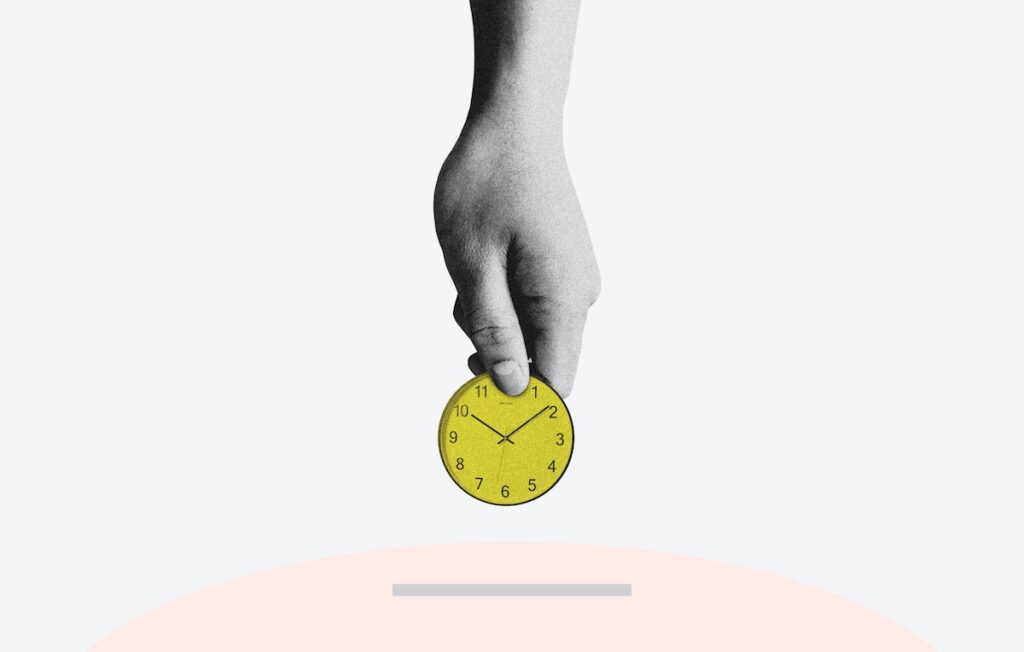
Worldwide, “more than 700,000 people die by suicide every year, which is one person every 40 seconds” (WHO). In England, the prevalence of non-suicidal self-harm has more than doubled, but service use for this has remained low (McManus et al., 2019).
Treatment needs for people who self-harm or experience suicidal behaviour are not being adequately met. Demand for support and treatment of self-harm far exceeds what is available. Our public health messages preach reaching out to ask for help, but when people do, they are often faced with a myriad of obstacles such as long waiting lists, lack of trained professionals, discrimination, or exclusion from services (Quinlivan et al., 2021; Mughal et al, 2020).
There is a push to find effective treatments for self-harm and suicidal behaviour that may address some of these barriers and can be scaled up to a large population. This blog summarises a recent pragmatic randomised controlled trial (RCT) conducted in the United States with adult outpatients (Simon et al., 2022). The study sought to “compare 2 low intensity outreach programs with usual care in the prevention of suicidal behaviour” (Simon et al., 2022).

Often, the treatment needs of people who self-harm or feel suicidal are not being adequately met. Could low-intensity treatments be the answer?
Methods
The pragmatic design examines the effectiveness of treatment under conditions that reflect real clinical practice and the variations between patients that would normally occur, rather than typical RCT designs that examine effects under ideal conditions, using strict eligibility criteria (Roland et al., 1998).
Electronic health records were used from 4 US integrated health systems. Patients were eligible to be randomised for an intervention if they reported thoughts of death or self-harm “more than half the days” or “nearly every day” during the past two weeks on the Patient Health Questionnaire (PHQ-9) between March 2015 and September 2018.
Patients were then randomised into one of three groups: Care management, Skills training, or Usual treatment (control group). The interventions consisted of:
| Care Management (intervention group)
|
Skills Training (intervention group)
|
Usual care (control group)
|
| Regular outreach for assessment of suicide risk | Online programme supported by skills coach | Routine use of PHQ-9 at mental health visits |
| Guideline based recommendations for outpatient follow-up | Online program was video instruction of four DBT skills (mindfulness, mindfulness of current emotion, opposite action, paced breathing) | Routine use of risk assessment |
| Care-managers follow-up messages featuring motivational enhancement and outpatient care pathways | Skills coaches sent messages to reinforce each visit to the online program and encourage practicing skills | Creation of safety plans for those at high risk |
| Outreach messages to those who had not recently visited |
Participants in any of the treatment groups were free to access any non-study mental and general health services.
The outcomes of the study were:
- Time to first non-fatal or fatal self-harm within 18 months after randomisation
- Death or hospitalisation from self-harm using a narrower definition of self-harm
- Death or hospitalisation from self-harm using a broader definition of self-harm
- Participation in interventions
- Use of non-study mental and general health services
The care management intervention and the skills training intervention were compared to usual treatment, but not directly compared. To measure the time to first non-fatal or fatal self-harm, hazard ratios were calculated.
Results
The results of this study were: 18,882 patients were randomised in total. Of these n=6,230 were randomised to care management, n=6,227 were randomised to skills training, and n=6,187 were randomised to usual care.
- There were 45 deaths by self-harm and 495 non-fatal self-harm events over 18 months after randomisation.
- There was no difference in risk of fatal or nonfatal self-harm over 18 months between the care management and usual care groups.
- The risk of fatal or non-fatal self-harm events was approximately 30% higher in the skills training group compared to usual care. This was a significant difference.
- The pattern of self-harm leading to death or hospitalisation was the same whether the broad or narrow definition of self-harm was used.
- Participation in the two active treatment groups was low. Of the 31% that initially accepted care management, 17% remained engaged for over 9 months. Of the 39% that were offered skills training, only 2% engaged for over 9 months.
- The use of non-study mental health services (e.g. primary care, outpatient mental health services) over 12 months did not differ between either intervention group or the usual care group.

Low-intensity treatments for self-harm did not reduce the risk of self-harm, and in fact, may increase the risk of self-harm in some instances, compared to usual care.
Conclusions
The results of this study suggest that:
Care management did not significantly reduce the risk of self-harm
and
brief online training in selected DBT skills training increased the risk of self-harm, compared with usual care.
The authors concluded that the therapeutic approaches used within this RCT should not be implemented within standard clinical practice, as the results suggest these low intensity interventions may in fact cause more harm than good.

Therapeutic approaches used within this clinical trial should not be implemented within standard clinical practice.
Strengths and limitations
This is an important study which highlights some of the challenges of scaling up low-intensity interventions for self-harm and suicidal behaviour. It has a large sample size, good long-term follow-up, assesses the treatments under real-life routine practice conditions and helpfully provides access to their treatment manuals so there’s greater transparency about what is included in the interventions.
However, more discussion is needed around the interventions themselves. It’s not clear why those four DBT skills (mindfulness, mindfulness of current emotion, opposite action, and paced breathing) were chosen. Although skills training has been identified as one of the mechanisms of change in DBT (Mehlum, 2021), using it in isolation could possibly reduce its effectiveness and acceptability among patients. This research suggests it can even be harmful. It seems similar to picking out questions from a questionnaire and expecting them to have good reliability and validity separately from the measure. What may be further compounding this (and affecting the participation rates) is the online format of the skills training, with no in-person contact.
Self-harm and suicide are complicated, personal, and often misunderstood. Although technology may be a helpful aid, it is unlikely to address the complex reasons for self-harm and suicidal behaviour, we need compassion, humanity, and humility for that.

Using parts of a self-harm intervention, rather than the whole treatment program, may compromise its effectiveness and acceptability.
Implications for practice
Within mental health services, we are often overstretched and under-resourced to provide a full DBT program, so a low-intensity option is sometimes all we can offer. As the intervention in the current study, it uses specific skills and is offered remotely due to limited group sizes. This study suggests we should be reconsidering if this is an appropriate option. NHS services are informed by research evidencing the efficacy of DBT in treating those with frequent suicidal ideation and self-harm (DeCou et al., 2019), but we are currently unsure about the efficacy of the watered-down version clients then receive. It appears that intensive preventative work with this population is fundamental to reducing people reaching a crisis point and being bounced around the hospital and crisis services (Chartrand et al., 2020).
The authors found an “increased risk in those who only briefly engaged in either intervention” and concluded that “some patients may have been dissatisfied with these limited interventions and become more discouraged.” This highlights the impact of poor or limited therapeutic support on a patient’s engagement and the small window we have as clinicians to offer support and hope about a way forward.
In the future, when we consider adapting self-harm treatments for scaling up to larger populations, it’s important we examine their acceptability to patients to ensure we’re not removing key components of the intervention or causing harm. A top priority also needs to be self-harm interventions that can be developed and scaled up in low-and-middle income countries, which account for 75% of the deaths by suicide. There is a dearth of research in this area (Troup et al, 2021).
Lived experience perspective from Millie Witcher
After reading this study, I reflected upon the implications for practice as both a trainee clinical psychologist and as someone with lived experience of self-harm over several years. The conclusions the authors made spoke to both parts of my professional and personal identity. As someone with lived experience of self-harm, this study highlights the view most services appear to hold at present: ‘what is the best way we can support someone to stop, as quickly and resource-limited as possible?’ Of course, this makes sense with the increasing number of individuals presenting to services with suicidal ideation and/or self-harm. However, the more intensive interventions would allow for consideration of what is motivating someone to feel this way. Perhaps a less manualised approach allows for difference and nuance and for the individual to find what works for them, depending on the function their self-harm is serving.

Repetitive self-harm and suicidal behaviour may require more intensive interventions than what can be offered through low-intensity treatments.
Statement of interests
None to report.
Links
Primary paper
Simon GE, Shortreed SM, Rossom RC, Beck A, Clarke GN, Whiteside U, Richards JE, Penfold RB, Boggs JM, Smith J. Effect of Offering Care Management or Online Dialectical Behavior Therapy Skills Training vs Usual Care on Self-harm Among Adult Outpatients With Suicidal Ideation: A Randomized Clinical Trial. JAMA. 2022 Feb 15;327(7):630-638. doi: 10.1001/jama.2022.0423. PMID: 35166800; PMCID: PMC8848197.
Other references
World Health Organisation (WHO) https://www.who.int/teams/mental-health-and-substance-use/data-research/suicide-data
McManus S, Gunnell D, Cooper C, Bebbington PE, Howard LM, Brugha T, Jenkins R, Hassiotis A, Weich S, Appleby L. Prevalence of non-suicidal self-harm and service contact in England, 2000-14: repeated cross-sectional surveys of the general population. Lancet Psychiatry. 2019 Jul;6(7):573-581. doi: 10.1016/S2215-0366(19)30188-9.
Quinlivan L, Gorman L, Littlewood DL, Monaghan E, Barlow SJ, Campbell S, Webb RT, Kapur N. ‘Wasn’t offered one, too poorly to ask for one’ – Reasons why some patients do not receive a psychosocial assessment following self-harm: Qualitative patient and carer survey. Aust N Z J Psychiatry. 2022 Apr;56(4):398-407. doi: 10.1177/00048674211011262.
Mughal F, Troya MI, Dikomitis L, Chew-Graham CA, Corp N, Babatunde OO. Role of the GP in the management of patients with self-harm behaviour: a systematic review. Br J Gen Pract. 2020 Apr 30;70(694):e364-e373. doi: 10.3399/bjgp20X708257.
Roland M, Torgeerson D J. Understanding controlled trials: What are pragmatic trials? BMJ 1998; 316 :285 doi:10.1136/bmj.316.7127.285
Mehlum, L. (2021). Mechanisms of change in dialectical behaviour therapy for people with borderline personality disorder. Current Opinion in Psychology, 37, 89-93.
Chartrand, H., Tefft, B., Sareen, J., Hiebert-Murphy, D., Katz, L. Y., Klonsky, E. D., … & Bolton, J. M. (2020). A longitudinal study of correlates, discharge disposition, and rate of re-presentation to emergency services of adults who engage in non-suicidal self-injury. Archives of suicide research, 1-20.
DeCou, C. R., Comtois, K. A., & Landes, S. J. (2019). Dialectical behavior therapy is effective for the treatment of suicidal behavior: A meta-analysis. Behavior therapy, 50(1), 60-72.
Troup J, Fuhr DC, Woodward A, Sondorp E, Roberts B. Barriers and facilitators for scaling up mental health and psychosocial support interventions in low- and middle-income countries for populations affected by humanitarian crises: a systematic review. Int J Ment Health Syst. 2021 Jan 7;15(1):5. doi: 10.1186/s13033-020-00431-1. PMID: 33413526; PMCID: PMC7792016.
Photo credits
- Photo by Leslie Jones on Unsplash
- Photo by Adam Jícha on Unsplash
- Photo by Artur Voznenko on Unsplash
- Photo by Tom Morel on Unsplash
- Photo by Markus Spiske on Unsplash
- Photo by Morgan Housel on Unsplash

I am an Australian MH Nurse we have also had an explosion of on-line self-help apps for the same resource reasons. I have also wondered at effectiveness issues without professional follow up & guidance/ mentoring. Hope to see more research & resources put into this. Thanks for Raising awareness. More input from lived experience consumers is needed in design I think.